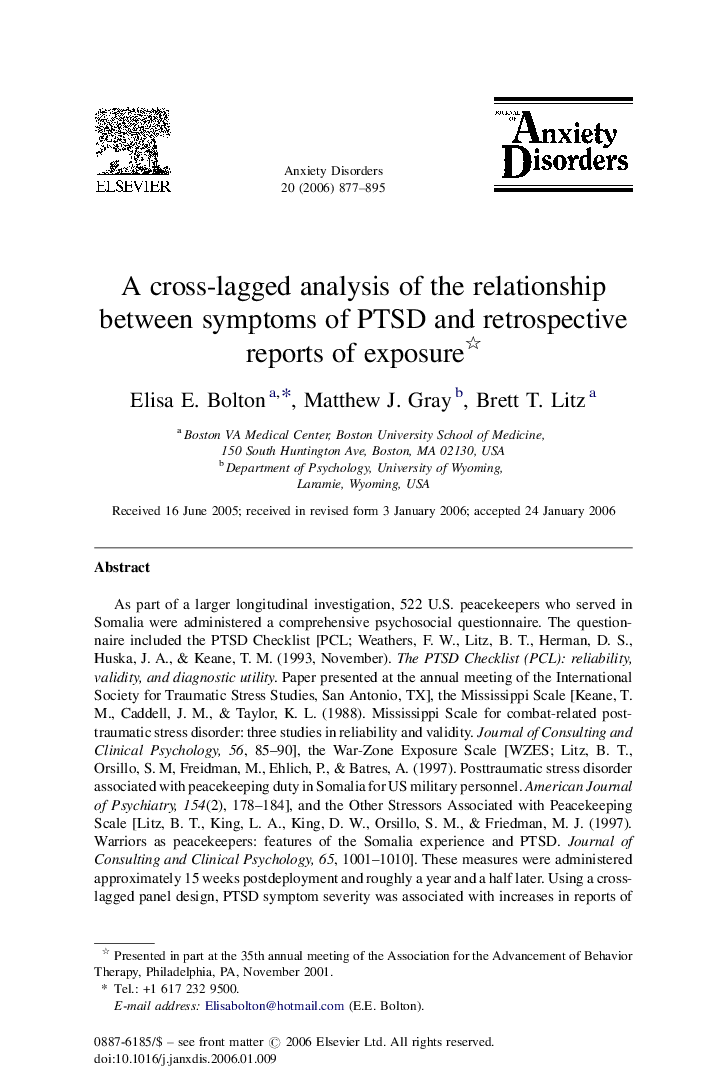| Article ID | Journal | Published Year | Pages | File Type |
|---|---|---|---|---|
| 910187 | Journal of Anxiety Disorders | 2006 | 19 Pages |
As part of a larger longitudinal investigation, 522 U.S. peacekeepers who served in Somalia were administered a comprehensive psychosocial questionnaire. The questionnaire included the PTSD Checklist [PCL; Weathers, F. W., Litz, B. T., Herman, D. S., Huska, J. A., & Keane, T. M. (1993, November). The PTSD Checklist (PCL): reliability, validity, and diagnostic utility. Paper presented at the annual meeting of the International Society for Traumatic Stress Studies, San Antonio, TX], the Mississippi Scale [Keane, T. M., Caddell, J. M., & Taylor, K. L. (1988). Mississippi Scale for combat-related posttraumatic stress disorder: three studies in reliability and validity. Journal of Consulting and Clinical Psychology, 56, 85–90], the War-Zone Exposure Scale [WZES; Litz, B. T., Orsillo, S. M, Freidman, M., Ehlich, P., & Batres, A. (1997). Posttraumatic stress disorder associated with peacekeeping duty in Somalia for US military personnel. American Journal of Psychiatry, 154(2), 178–184], and the Other Stressors Associated with Peacekeeping Scale [Litz, B. T., King, L. A., King, D. W., Orsillo, S. M., & Friedman, M. J. (1997). Warriors as peacekeepers: features of the Somalia experience and PTSD. Journal of Consulting and Clinical Psychology, 65, 1001–1010]. These measures were administered approximately 15 weeks postdeployment and roughly a year and a half later. Using a cross-lagged panel design, PTSD symptom severity was associated with increases in reports of exposure at Time 2. However, this finding was modest and was not specific to the recall of traumatic events.
